"Mr. Speaker, Mr. Vice President, members of Congress, distinguished guests, my fellow Americans."
These words, or a slight variation of them, are spoken by the president to begin the annual State of The Union address. Today the annual State of the Union address is usually more political theater than substance. The House Sergeant-at-Arms bellows: "Mr. Speaker! The President of the United States!" The president subsequently enters the House Chamber and slowly walks to the podium, shaking hands with members of Congress. Some arrive at the Chamber hours before the address to stand in the center aisles to be seen greeting the president on national television.
There is nothing in the U.S. Constitution mandating that the president even deliver the address in person. Article ll, Section 3 of the U.S. Constitution only dictates: "He shall from time to time give to Congress information of the State of the Union and recommend to their Consideration such measures as he shall judge necessary and expedient."
In 1790, George Washington began the practice of delivering the address in person. His first address was just 833 words. By contrast, Harry S. Truman's 1946 address was more than 25,000 words.
Washington's successor, John Adams, followed suit in delivering the address in person. Thomas Jefferson, an anti-federalist who believed in a limited presidency, believed that delivering the speech was monarchical. Accordingly, he jettisoned the practice of personally appearing before Congress and submitted his report in writing. This precedent continued through succeeding presidencies until 1913.
Woodrow Wilson, in an effort to bring the presidency closer to the people, delivered his address in person in 1913. Wilson's Secretary, Joseph P. Tumulty, said the new president wanted to bring about "a closer intimacy between the Congress and the executive." Wilson continued this annual practice, shifting the address from a written statement of the work of the executive branch of government to a personal plea for the Congress to support his legislative program.
President Warren G. Harding also personally delivered the address, as did his successor, Calvin Coolidge. However, Coolidge delivered just his first address in person. Herbert Hoover, succeeding Coolidge, did not deliver the address in person.
The practice of delivering the State of The Union address in person was revived by Franklin D. Roosevelt in 1934, and has been an expected practice ever since. Roosevelt was also the first president to use the term "State of the Union" in his address. The original term for the oration was "The President's Annual Message to Congress." It has only been officially referred to as the "State of The Union address" since 1947.
During the address, the leaders of both chambers of Congress (the Speaker of the House, and the vice president in his capacity as the president of the U.S. Senate) sit behind the president. The Speaker of the House officially introduces the president.
The optics of this event can also make an impression on the American psyche. When Lyndon B. Johnson succeeded to the presidency upon the death of John F. Kennedy, there was no provision in the U.S. Constitution for the president to nominate a new vice president. The Senate president pro tempore filled the chair reserved for the vice president. The incumbent in this position would sit behind the president. Americans saw 73-year-old House Speaker John McCormack and 87-year-old Senate President Pro Tempore Carl Hayden seated behind President Johnson as he delivered his 1964 State of the Union address. Millions of Americans saw that these two elderly men were next in line for the presidency. This visual provided a groundswell of support for the passage of the Twenty-fifth Amendment to the U.S. Constitution, allowing the president to nominate a new vice president in the case of a vacancy.
Prior to 1966, the State of the Union address was actually delivered during the day. Johnson broke this precedent in an effort to maximize television viewership. This was also the first time that the major opposition party delivered a rebuttal following the address. The opposing party often puts up its congressional leaders to deliver a rebuttal. This was the case in 1966, when U.S. Senate Minority Leader Everett Dirksen (R-IL) and U.S. House Minority Leader Gerald R. Ford (R-MI) delivered the official response to the President's State of the Union address.
Sometimes the parties use this opportunity to showcase rising stars who wield little national name recognition. In 1985, Arkansas Governor Bill Clinton and Florida Governor Bob Gramm delivered the rebuttal. Both were thought of as potential presidential contenders.
In 1997, the Republicans offered second-term U.S. Representative J.C. Watts this platform. In 2010, newly elected Virginia Governor Bob McDonnell performed the honors.
With the advent of the teleprompter, the president can now talk directly to the audience without having to refer to notes at the podium. Every president since Dwight D. Eisenhower has delivered the address with the aid of this electronic device except for Richard M. Nixon who preferred to use note cards. In 1994, the wrong speech was placed into the teleprompter, forcing Bill Clinton to begin the address from memory until the problem was ameliorated.
Richard M. Nixon delivered his 1974 State of the Union address as the nation was in the crux of the Watergate scandal, which would bring his administration down later that same year. Confronting the scandal, Nixon declared: "One year of Watergate is enough." In that address, Nixon also proposed a comprehensive health insurance plan that was eerily similar to the one signed by President Obama in 2010. The program would mandate all Americans to have health insurance, with the federal government subsidizing those who could not afford it. Nixon said in his 1974 State of the Union address: "The time is at hand to bring comprehensive, high quality health care within the reach of every American." However, the Democratic Congress, supporting a single-payer non-for-profit health care system, did not move on Nixon's plan, arguing that it would be a boon to the insurance companies.
The next year, Nixon's successor, Gerald R. Ford, delivered a dour State of the Union address. It was a time of increasing unemployment and inflation. Ford declared that the nation had become "self-indulgent" and that, "the state of our country is not good."
As the president leaves the Chamber podium he shakes hands and signs autographs for members of Congress from both sides of the aisle. Members of Congress jockey to shake the president's hand. Some members use the occasion to lobby for presidential attention for their congressional districts. For example, at the 2012 State of The Union address, U.S. Representative Shelia Jackson Lee (D-TX) invited President Barack Obama to visit the M.D. Anderson Medical Center located in her congressional district.
The day following the State of the Union address, both supporters and opponents of the President engage in political combat regarding the president's remarks. To members of the president's party the address is always brilliant, inspiring oratory. To members of the opposing party, the speech is partisan rhetoric unworthy of the president's esteemed office. However, the job approval ratings of the president usually gets a decent bump from all of the free airtime he receives prior to, during, and subsequent to delivering his address to a national audience in the majestic historic House Chamber.
